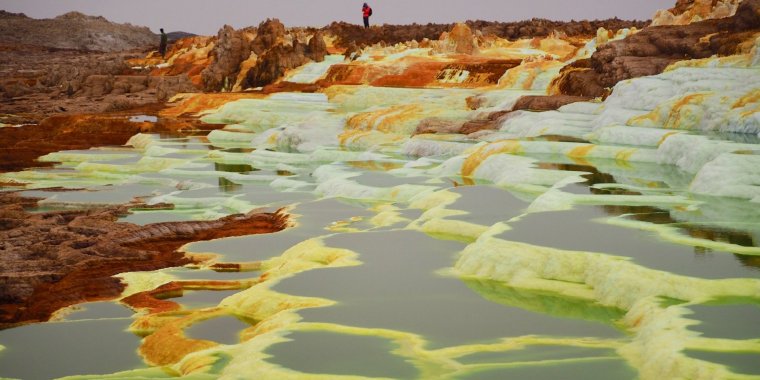| News / Science News |
Place discovered on earth with no microbial life
Scientists have confirmed the absence of microbial life in hot, saline, hyperacid ponds in the Dallol geothermal field in Ethiopia.

Place discovered on earth with no microbial life. Photo: Jorge Tung/Unsplash
According to a study, certain microorganisms can develop in such multi-extreme environment. The study led authors to present this place as an example of the limits that life can support, and even to propose it as a terrestrial analogue of early Mars.
But a new study by the French-Spanish team of scientists led by biologist Purificación Lopez Garcia of the French National Centre for Scientific Research (CNRS) suggests that there is no life in Dallol’s multi-extreme ponds.
Lopez Garcia said, “After analyzing many more samples than in previous works, with adequate controls so as not to contaminate them and a well-calibrated methodology, we have verified that there’s no microbial life in these salty, hot and hyperacid pools or in the adjacent magnesium-rich brine lakes.”
“What does exist is a great diversity of halophilic archaea (a type of primitive salt-loving microorganism) in the desert and the saline canyons around the hydrothermal site, but neither is found in the hyperacid and hypersaline pools themselves, nor in the so-called Black and Yellow lakes of Dallol, where magnesium abounds. And all this despite the fact that microbial dispersion in this area, due to the wind and to human visitors, is intense.”
The results of the study were confirmed by using different methods like the massive sequencing of genetic markers to detect and classify microorganisms, microbial culture attempts, fluorescent flow cytometry to identify individual cells, chemical analysis of brines and scanning electron microscopy combined with X-ray spectroscopy.
López García cautioned, “some silica-rich Dallol mineral precipitates may look like microbial cells under a microscope, so what is seen must be analyzed well. In other studies, apart from the possible contamination of samples with archaea from adjacent lands, these mineral particles may have been interpreted as fossilized cells, when in reality they form spontaneously in the brines even though there is no life.”
Scientists particularly discovered two physical-chemical barriers that prevent the presence of living organisms in ponds: the abundance of chaotropic magnesium salts (an agent that breaks hydrogen bridges and denatures biomolecules) and the simultaneous confluence of hypersaline, hyperacid and high-temperature conditions.
The study helps to circumscribe the limits of habitability and demands caution when interpreting morphological biosignatures on Earth and beyond. Meanwhile, one should not rely on the apparently cellular or “biological” aspect of a structure, because it could have an abiotic origin.
The study also presented an evidence that there are places on the Earth’s surface, such as the Dallol pools, which are sterile even though they contain liquid water. Meanwhile, the presence of liquid water on a planet, which is often used as a habitability criterion, doesn’t necessarily means that it has life.
Lopez Garcia said, “We would not expect to find life forms in similar environments on other planets, at least not based on a biochemistry similar to terrestrial biochemistry.” (Tasnim News Agency)
YOU MAY ALSO LIKE





